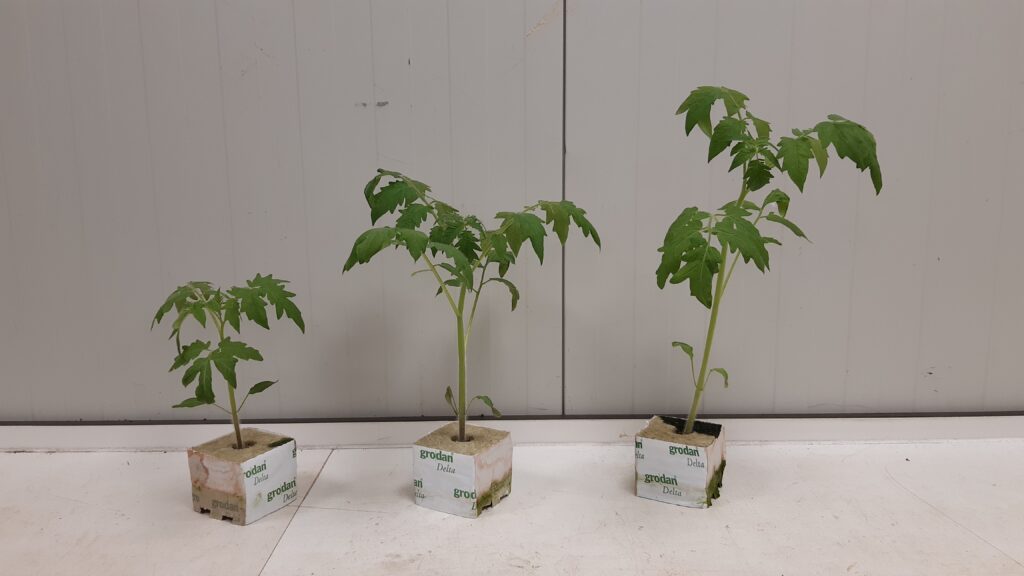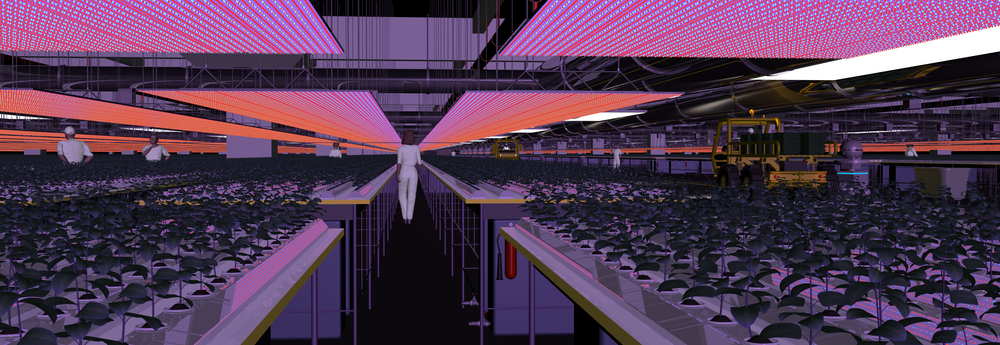Wageningen PhD students Martina Lazzarin, Davy Meijer and Mara Meisenburg play with light. To be more accurate: with the colours of light, such as ultraviolet, blue, red and far-red light. These light frequencies influence plants.
Lazzarin researches the effects this light has on photosynthesis. Meisenburg examines the effects on the metabolites and defence signalling process in the plant, while Meijer studies the impact on pests and biological control. Their hypothesis: you can improve the resistance of plants against herbivores with LED light.
Far-red
First, they compiled an inventory of the existing knowledge in a review article published in Trends in Plant Science. Far-red light, in particular, is an essential factor in this regard. Plants use far-red light to outgrow the surrounding plants, with which they compete for light. This growth occurs at the expense of the plant’s resilience to biotic stress. The plants also use red light, mainly for photosynthesis, but this light can also increase resistance to pests and diseases. By experimenting with the light frequencies, the researchers hope to enhance the resilience of crops.
LEDs can become a part of integrated pest management
Davy Meijer
Terpenes
This is a work in progress. The researchers must first understand how the different colours precisely affect the plants. Meisenburg, for instance, studies which secondary metabolites in the plants – terpenes and phenolic compounds – increase the resistance to insects and what LED frequencies may increase these metabolites. During these tests, she cannot increase the amount of useful red light unchecked, because too much red light causes stress in the plants. So, the researchers search for a balance while simultaneously maintaining a high level of production.
Photosynthesis
Lazzarin studies the effects of far-red on photosynthesis because, although these wavelengths decrease resistance to insects, they can increase plant growth and resilience to light stress.
And Meijer investigates the effects of LED light on the resistance of tomatoes to whiteflies and spider mites. He suspects that LEDs can greatly reduce the number of herbivores with the right light frequencies. ‘LEDs can become a part of integrated pest management.’

The effect of far-red light shown.

 Photo: Shutterstock
Photo: Shutterstock